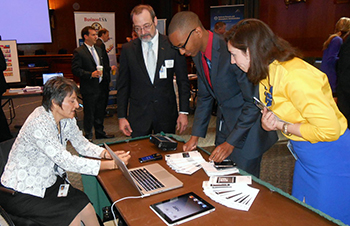 In towns and cities all across the globe, there are new structures springing up all the time. Whether these be stunning high-rise buildings,elaborate road and rail bridges, impressive medium to large commercial properties, or basic smaller constructions, each project will have undergone extensive investigative work, prior to the first brick being laid. At the heart of this preparation process will almost certainly have been a geotechincal consulting engineer.
In towns and cities all across the globe, there are new structures springing up all the time. Whether these be stunning high-rise buildings,elaborate road and rail bridges, impressive medium to large commercial properties, or basic smaller constructions, each project will have undergone extensive investigative work, prior to the first brick being laid. At the heart of this preparation process will almost certainly have been a geotechincal consulting engineer.
Inspired concepts, initiated with the finished article in mind, sometimes overlook potential hazards that might affect the actual implementation of the project. The services of a geotechnical engineer will be utilized by a developer, to determine and define foundations and materials required to allow the job to be carried out, safely and successfully. They will explore both the surface and the subsurface on the site itself, to establish the condition of the soil, together with the removal of samples for more thorough laboratory testing.
This branch of engineering is vital to the construction industry. It is imperative that the physical and chemical properties contained within the materials being used, have their behavior monitored, to help evaluate things like their stability and how they might interact with other parts of the project. They are able to implement sophisticated techniques that modify the particles of the soil mass, particularly its strength and porosity. This not only improves matters from a safety angle, but also very often, reduces costs in the long run.
Effectively, geotechnical consulting engineers will deliver a reassuring expertise into the science behind rock and soil mechanics, to enable a host of disciplines in civil engineering to proceed. Their role will incorporate several stages, beginning with the investigations, always with a sensitive eye on environmental protection. This stage will be followed by a period of risk assessment, taking into account any potential contamination issues. Studies of the soil’s permeability, in addition to high-tech ground-penetrative measuring, will be carried out.
Armed with this information, recommendations can be made for the most appropriate foundation option to take a project forward. Any constraints that are identified during analysis, which relate to the findings in the soil, can be rectified through highly skilled design, which is another part of the geotechnical consulting business. They will validate any remedial work undertaken, producing succinct reports to support their actions, complying with established criteria.
There are numerous geotechnical consulting companies; consequently economical solutions are the order of the day. Their innovative ideas can make all the difference to an expensive development, potentially speeding up completion dates and therefore cutting costs. Additional practices carried out include: earthwork design, desk studies, waste classification, pre-purchase appraisal and treatment of mine workings.
The actual practice of geotechnical engineering is nearly 100 years old and although probably not as in-depth as the modern methods, the general principles would have been the same. Anything that holds back earth needs to be properly tested for strength and stability. A retaining wall for example, has all sorts of issues to be addressed. Weight and pressure have to be just right, otherwise there can be issues with erosion and movement, leading to potential cracks and even collapse. In these cases, height, density and drainage all have to be factored in.
These accomplished engineers deserve great credit for the work they undertake, which for the most part, goes largely unnoticed away from the building site. Nevertheless, the many marvelous contemporary designed structures, that create wonderful skylines around the world today, would not get off the ground if it were not for the work of the geotechnical engineers.




